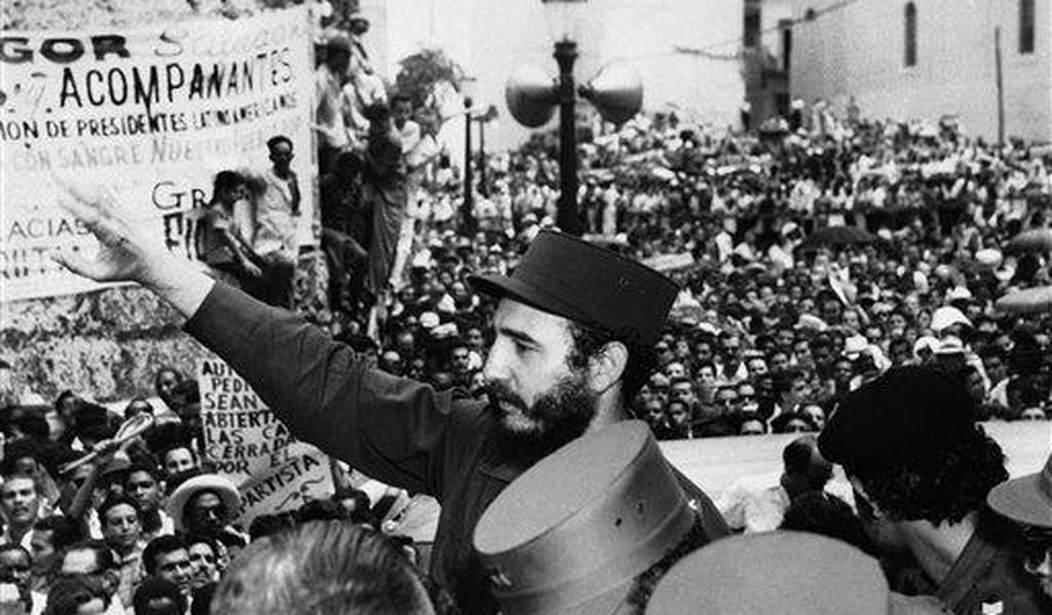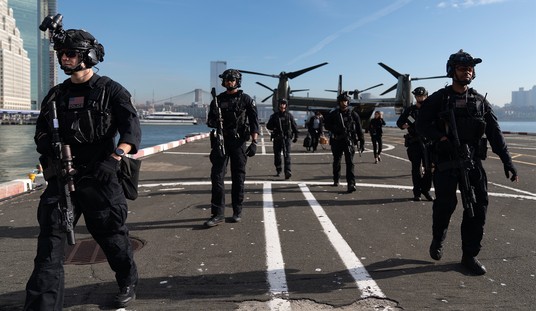We all saw it in the Fake News Media’s top educational source on the Cuban revolution, right? It’s New Year's Eve 1958 in Havana and the “U.S.-backed dictator” Batista says goodbye to his crooked cronies (American and Cuban) at a lavish ball, then hightails it out of the country as the brave, noble and chivalrous Fidel Castro and Che Guevara close in on Havana.
So far so good—as far as the surface details go. But Hollywood’s implications in those scenes actually trash the truth.….
But perhaps my phrase “Fake News Media’s top educational source” strikes some of my amigos as unnecessarily hyperbolic?” Fair enough. So here’s a sampling:
“I mean everybody who saw Godfather II knows what it was like when Castro took over,” NBC’s Chris Matthews, winner of the “David Brinkley Award for Excellence in Broadcast.”)
“Everything I know about pre-Castro Cuba I learned from Godfather 2!” (Jon Stewart, long-hailed as the TOP news source for Americans under 40.)
The implications of those Godfather scenes mesh seamlessly with the Media/Academia’s cliché-ridden fables concerning Cuba. To wit:
Cliché No. 1: The plucky Castro brothers and Che Guevara succeeded in toppling a “U.S.-backed dictator,” whose patrons and puppeteers went instantly ballistic at his ousting.
The plucky Castro brothers and Che Guevara then “defied” a relentlessly hostile U.S. that worked ceaselessly to topple them.
In fact: Former U.S. Ambassador to Cuba, Earl T. Smith, during Congressional testimony in 1960, declared flatly: "We put Castro in power." He referred to the U.S. State Department and CIA's role in aiding, both morally and materially, the Castro rebels, to their pulling the rug out from under Batista with an arms embargo, and finally to the U.S. order that Batista vacate Cuba. Ambassador Smith knew something about these events because he personally delivered the messages to Batista, who was then denied exile in the U.S.
Recommended
"Me and my staff were all Fidelistas," boasted Robert Reynolds, the CIA's "Caribbean Desk's specialist on the Cuban Revolution" from 1957-1960. "Everyone in the CIA and everyone at State were pro-Castro, except Ambassador Earl Smith." This statement is from former CIA operative in Santiago Cuba, Robert Weicha. The U.S. gave Castro's regime its official benediction more rapidly than it had recognized Batista's in 1952, and lavished it with $200 million in subsidies.
In August 1959, the liberal U.S. ambassador to Cuba, Philip Bonsal, even alerted Castro to a conspiracy against his regime by anti-communist Cubans. Thanks in part to Ambassador Bonsal's solicitude for a regime then insulting his nation as "a vulture preying on humanity!" and poised to steal $2 billion from U.S. stockholders, the anti-Castro plot was foiled, hundreds of the plotters imprisoned or executed, and the regime that three years later came closest to vaporizing many of America's biggest cities (including Bonsal's home) with nuclear missiles, survived.
In 1958, at the very time the U.S. State Dept. and CIA were helping his movement, Castro had written in confidence to a colleague, "War with the U.S. is my true destiny." Castro had sent armed guerrillas to attempt the violent overthrow of four sovereign Latin American countries, stole $2 billion from American businessmen at Czech machine-gun point, invited in thousands of Soviet military and police agents, kidnapped 50 U.S. citizens from Guantanamo Bay, and jailed and executed several Americans before we lifted a finger against him.
In fact, during this period the State Dept. made over 10 back channel diplomatic attempts to ascertain the cause of Castro's tantrums. Argentine President Arturo Frondizi was the conduit for many of these and recounts their utter futility in his memoirs.
Then the coup-de grace: “We ended up getting exactly what we'd wanted all along," snickered Nikita Khrushchev in his memoirs about the Cuban Missile Crisis Resolution:
"Security for Fidel Castro's regime and American missiles removed from Turkey. Until today the U.S. has complied with her promise not to interfere with Castro and not to allow anyone else to interfere with Castro. After Kennedy's death, his successor Lyndon Johnson assured us that he would keep the promise not to invade Cuba."
Henry Kissinger, as Gerald Ford's secretary of state, renewed the pledge. After the Missile Crisis "resolution," Castro's "defiance" of the U.S. took the form of the U.S. Coast Guard and even the British Navy (when some intrepid exile freedom fighters moved their operation to the Bahamas) shielding him from exile attacks. Far from "defying" a superpower, Castro hid behind the skirts of two superpowers, plus the British Empire.
Cliché no. 2: Pre-Castro Cuba was a veritable U.S. colony, greedily exploited by U.S. corporations and by her most notorious gangsters who maintained the hapless island as a sordid casino and bordello teeming with wretchedly poor and desperate natives. Castro and Che Guevara rectified this shameful condition.
The Facts: Cuba’s tourism industry as a whole generated $60 million in 1958. Havana by itself had 42 hotels. The Mob reputedly had financial interest in 7 of these–and these didn’t include among them Cuba’s biggest hotel, the Habana Hilton. Instead the biggest hotel on the island was majority owned by the pension plan of the Cuban Federation of Gastronomic Food Workers. This fully-documented historical datum, needless to add, doesn’t mesh well with the fairy tale narrative about Cuba’s horribly exploited working class of the time, now does it?”
And to cap it all off: in 1950 more Cubans (out of a population of six million) vacationed in the U.S., than Americans (out of 200 million) vacationed in Cuba. At that time, Cubans didn't come to the U.S. in any great numbers to settle. In fact as a percentage of population, Cuba took in more immigrants (primarily from Europe) in the early 20th century than did the U.S. In the 1950s, when Cubans were perfectly free to emigrate with all their property and U.S. visas were issued to them for the asking, fewer Cubans lived in the U.S. than Americans lived in Cuba.

























Join the conversation as a VIP Member